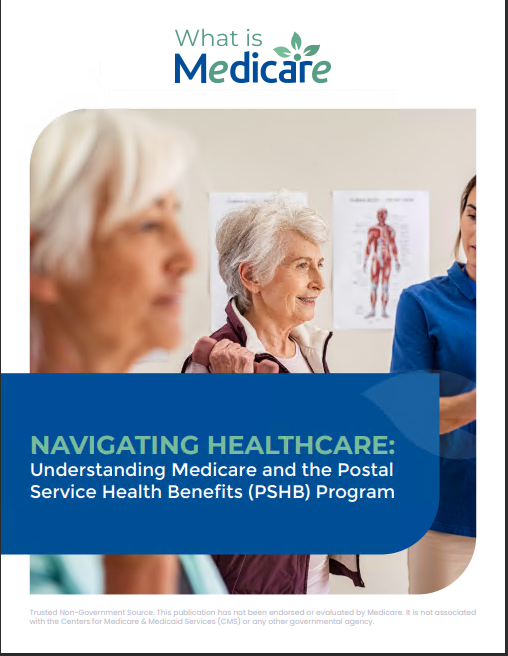Key Takeaways
- Understanding Medicare Parts A, B, C, and D is crucial for effectively navigating healthcare coverage options.
- Each Medicare part offers distinct benefits and coverage, essential for making informed healthcare decisions.
Confused About Medicare Parts? Let’s Break Down A, B, C, and D in Simple Terms
Navigating Medicare can be overwhelming due to its multiple parts and specific functions. Each part offers unique coverage, making it essential to understand how they work individually and together. This guide simplifies Medicare Parts A, B, C, and D, breaking down their benefits and coverage in clear, easy-to-understand terms.
What’s the Deal with Medicare Part A?
Medicare Part A, often called hospital insurance, covers inpatient hospital care. This includes services such as hospital stays, nursing facility care, hospice care, and some home health services. Most people qualify for Part A without paying a premium if they or their spouse contributed to Medicare taxes through their employment.
Part A is vital because it covers significant healthcare services that often come with high costs. However, it is important to note that Part A does not cover everything. Long-term care, custodial care, and non-medical services like personal care are typically not included. Understanding the scope of Part A helps beneficiaries anticipate potential out-of-pocket costs and consider supplementary coverage options if needed.
For instance, if you or a loved one requires an extended stay in a skilled nursing facility, it’s essential to know the duration and extent of coverage under Part A. Typically, Medicare Part A covers the first 20 days of care in a skilled nursing facility without a coinsurance charge, but beyond that, there may be significant out-of-pocket expenses. This is where considering a supplemental insurance plan can be beneficial to manage costs not covered by Part A.
Breaking Down Medicare Part B
Medicare Part B, known as medical insurance, handles outpatient care. This encompasses doctor visits, preventive services, outpatient hospital services, and durable medical equipment. Unlike Part A, Part B requires a monthly premium and involves deductibles and coinsurance.
Part B plays a crucial role in managing routine healthcare needs. It covers preventive services, which are valuable for early detection and treatment of health issues. Beneficiaries should familiarize themselves with the services covered under Part B and how it complements Part A, creating a more comprehensive healthcare package.
Preventive services covered by Part B include flu shots, cardiovascular screenings, cancer screenings, and diabetes management. Utilizing these services can lead to early detection of potentially serious health conditions, improving outcomes and reducing long-term healthcare costs. Additionally, Part B covers certain types of durable medical equipment like wheelchairs, walkers, and hospital beds, which are essential for maintaining mobility and independence for those with chronic health issues.
Medicare Part C: What You Need to Know
Medicare Part C, or Medicare Advantage, serves as an alternative to Original Medicare. These plans are provided by private insurance companies approved by Medicare. Medicare Advantage plans must cover all services included in Original Medicare (Parts A and B) and often offer additional benefits such as dental, vision, and hearing care. Some plans also include prescription drug coverage.
Choosing a Medicare Advantage plan involves evaluating factors like the plan’s network of providers, out-of-pocket costs, and additional benefits. It’s important to compare different plans to find one that best meets individual healthcare needs. While Part C can offer more comprehensive coverage than Original Medicare, it requires careful consideration of the available options.
One significant advantage of Part C is the inclusion of services not typically covered by Original Medicare, such as routine dental cleanings, eye exams, and hearing aids. Additionally, some Medicare Advantage plans offer wellness programs, gym memberships, and other health-related perks designed to promote a healthy lifestyle. However, it’s crucial to check if the preferred doctors and healthcare facilities are within the plan’s network to avoid unexpected out-of-network charges.
Understanding Medicare Part D
Medicare Part D provides prescription drug coverage. These plans are offered by private insurance companies and can be added to Original Medicare or included in some Medicare Advantage plans. Each Part D plan has a formulary, which is a list of covered medications, and this list can vary from plan to plan.
Enrolling in a Part D plan is crucial for individuals who require prescription medications. Beneficiaries should review the formulary of each plan to ensure their medications are covered and compare the associated costs. Part D helps reduce the financial burden of prescription drugs, making it an essential component of comprehensive healthcare coverage.
It’s important to be aware of the different phases of coverage under Part D: the deductible phase, the initial coverage phase, the coverage gap (often referred to as the “donut hole”), and the catastrophic coverage phase. Each phase has different cost-sharing responsibilities, and understanding these can help beneficiaries manage their prescription drug costs more effectively. Additionally, reviewing the plan’s formulary each year during the open enrollment period is vital, as the list of covered drugs and their costs can change annually.
How Do Medicare Parts A and B Work Together?
Medicare Parts A and B together form what is known as Original Medicare. Part A covers inpatient services, while Part B covers outpatient care. Together, they provide a broad spectrum of healthcare coverage, but there are gaps.
For instance, Original Medicare does not cover most prescription drugs, long-term care, or dental and vision care. Beneficiaries often need additional coverage to fill these gaps, such as Medigap (Medicare Supplement Insurance) or Medicare Advantage plans. Understanding how Parts A and B work together and where they fall short is essential for planning comprehensive healthcare coverage.
Medigap policies can help cover costs that Original Medicare does not, such as copayments, coinsurance, and deductibles. These policies are sold by private companies and can provide financial peace of mind by reducing out-of-pocket expenses. However, it’s important to note that Medigap policies do not cover services like dental, vision, or long-term care, so beneficiaries may need to seek additional coverage for these needs.
Exploring the Benefits of Medicare Part C
Medicare Advantage (Part C) plans offer several benefits beyond Original Medicare. These plans often include additional services like dental, vision, and hearing care. Some plans also offer wellness programs and fitness benefits. However, choosing a Part C plan requires understanding the network of providers and the specific benefits each plan offers.
Medicare Advantage plans can provide more personalized and comprehensive healthcare coverage. However, it’s important to evaluate each plan’s network and costs carefully. Beneficiaries should also consider their healthcare needs and whether the additional benefits offered by a Medicare Advantage plan justify any additional costs.
For example, if you have a chronic condition that requires regular visits to specialists, ensuring that those specialists are within the plan’s network is crucial. Additionally, examining the out-of-pocket maximum for each plan can provide an understanding of the financial protection offered. Medicare Advantage plans also may have different rules for getting services, such as requiring a referral to see a specialist, which is another important factor to consider when choosing a plan.
Simplifying Medicare Part D Coverage
Medicare Part D plans are essential for managing prescription drug costs. These plans vary in terms of the drugs they cover and the associated costs. Beneficiaries should compare different Part D plans to find one that covers their medications and fits their budget.
Each Part D plan has its formulary, which can change annually. It’s crucial for beneficiaries to review their plan’s formulary each year during the open enrollment period to ensure their medications are still covered. Part D provides valuable coverage for prescription drugs, making it a vital part of a well-rounded healthcare plan.
In addition to understanding the formulary, beneficiaries should be aware of the plan’s pharmacy network. Using pharmacies within the plan’s network can result in lower costs for medications. Some Part D plans also offer mail-order pharmacy services, which can provide convenience and cost savings for those who require regular medications.
Making Sense of Medicare: A Quick Overview
Understanding Medicare’s different parts is the first step in navigating healthcare coverage. Each part—A, B, C, and D—serves a specific function and offers different benefits. Together, they provide a comprehensive framework for healthcare coverage, but there are gaps that beneficiaries need to be aware of.
Planning for these gaps often involves considering additional coverage options like Medigap or Medicare Advantage plans. By understanding the basics of each Medicare part and how they work together, beneficiaries can make informed decisions about their healthcare coverage and ensure they have the necessary protection.
For instance, if dental and vision care are important to you, a Medicare Advantage plan that includes these benefits might be the best choice. On the other hand, if you prefer the flexibility of choosing any doctor who accepts Medicare, Original Medicare with a Medigap policy might be more suitable. Understanding your healthcare needs and preferences is key to selecting the right combination of Medicare coverage.
A Final Word on Navigating Medicare
Navigating Medicare can seem overwhelming, but breaking down each part into simple terms helps clarify the options and benefits available. Understanding Medicare Parts A, B, C, and D is crucial for making informed healthcare decisions and ensuring comprehensive coverage.
For more detailed information and personalized advice, beneficiaries should consult official resources like CMS.gov or speak with licensed insurance agents. These professionals can provide guidance tailored to individual needs and help navigate the complexities of Medicare. Additionally, reviewing your coverage annually and during the open enrollment period can ensure that your Medicare plan continues to meet your healthcare needs effectively.
Contact Information:
Email: [email protected]
Phone: 6175555678









